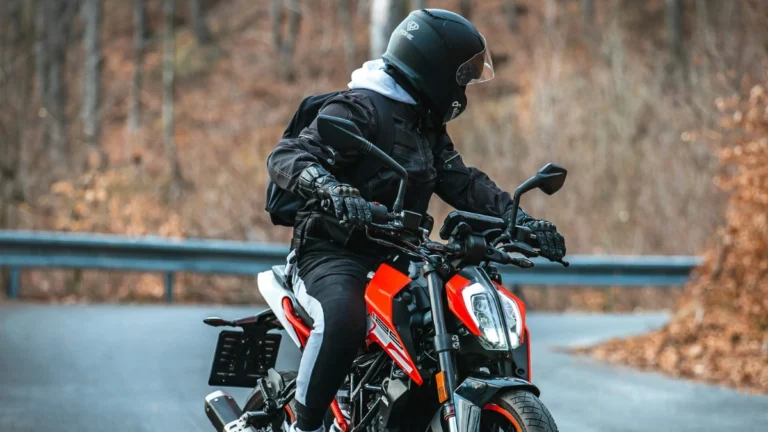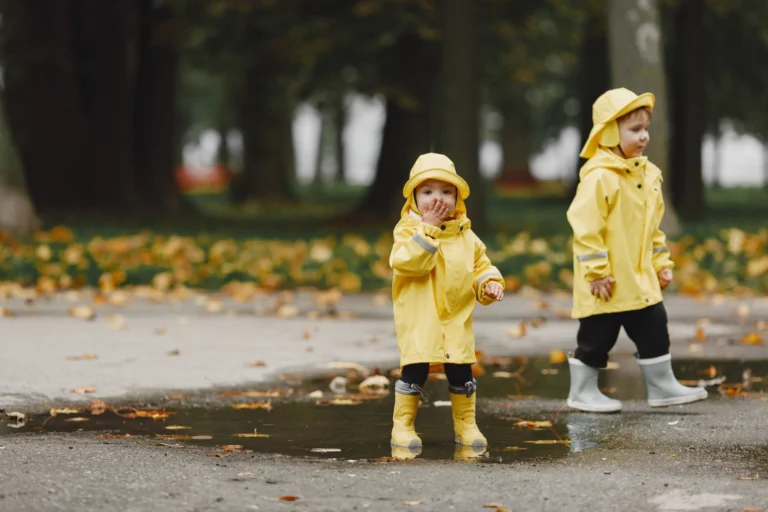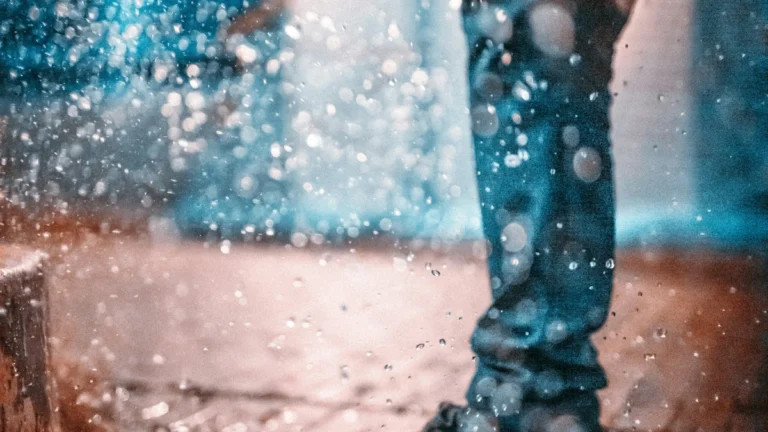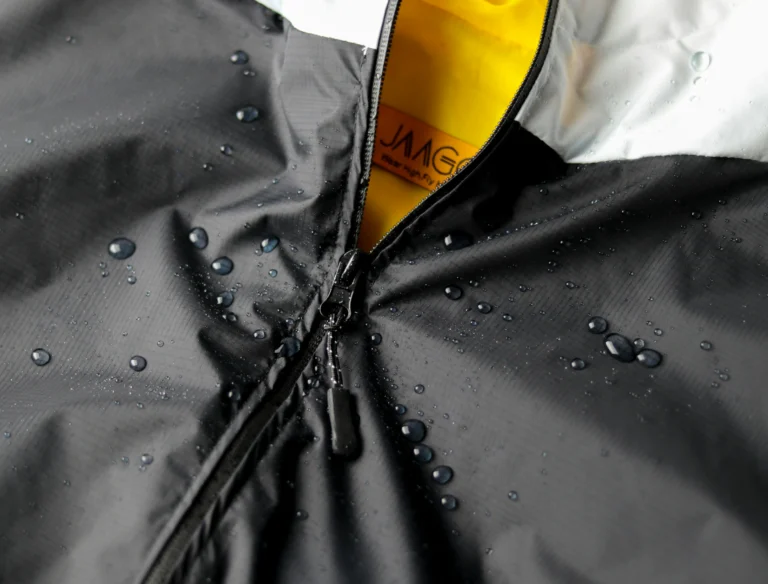On a backpacking trip, staying dry can make the difference between a fun trip and an unhappy one. A useful and lightweight tool for protecting yourself from unexpected rainfall is a rain poncho. But how can you choose carefully when there are so many options and also how to choose the best rain poncho for backpacking in monsoon?
I will help you pick the best rain poncho for your upcoming journey, we’ll break down all of the aspects you need to think about in this guide, including materials, weight, coverage, and extra features.
Why a Rain Poncho is important for Backpacking?
Do you know that a rain poncho is more that waterproof layer. it is like versatile actor which can do multiple roles same for rain poncho which can make or break your outdoor experience.
A poncho gives full-body covering, which keeps you and your backpack dry compared with standard rain coats. The following reasons why every hiker need to think about carrying one:
1 – Lightweight & Compact
Rain Poncho is designed to be ultra-lightweight and highly packable, unlike other bulky rain jackets, so you can always have rain protection on hand without sacrificed important space for other necessary items. Most ponchos fold down to a small size, making it easy to slip them into your backpack’s side pocket without adding excess weight.
2 – Super Ventilation (Air Flow)
Rain coats often have an issue of keeping heat, which causes sweating even in colder climates. on the other hand, because of their loose-fitting style, ponchos provide better airflow. Natural airflow from the open sides helps control body temperature and avoids the wet slimy feeling that frequently comes waterproof clothing. For travelers who need to remain comfortable on long walks, this makes them a great option.
3 – Full Coverage
When compared to a standard rain jacket, a high-quality rain poncho is made to provide protection from head to knee or even all over the body. The additional protection also covers your bag, keeping everything inside dry in the event of an unexpected rainfall. To keep your things protected from the rain, some ponchos even come with adjustable fits or back extensions to fit more heavy bags.
4 – Multi-Purpose Usage
Backpackers love multipurpose products, and a poncho is a great example. Your rain poncho may also serve the following reasons, depending upon its design:
It can be use as groundsheet (for dry sitting), an emergency shelter (for extra protection) and also wind breaker (protect from winds).
5 – Budget Friendly
A solid rain poncho can be far lower in price than an expensive rain jacket. A poncho offers excellent value for your money, no matter your level of skill as a hiker or your level of lack of knowledge.
Choose a Right Ponchos for Monsoon – Key Factors
More than just a waterproof sheet, a rain poncho is a important item of gear that may make or spoil any rainy camping trip. In along with keep you dry, a good poncho should be breathable, lightweight, and strong enough for use in tough conditions. The primary factors to help you in choosing the best one are listed below.

1 – Waterproofing – How well does it keep you dry?
The material, design, and coatings are 3 main components of a rain poncho that define how it is good at absorbing water.
1 – Material Quality
Sharing table that show different materials with recommended options so we can know which is good for trip.. also read recommended part which is very important for upcoming journey
| Material | Recommended For |
|---|---|
| Ripstop Nylon | Lightweight and Water-Resistant, great for long hikes and unpredictable weather |
| Polyethylene (PE) | Budget Friendly and good for emergency use. |
| PVC (Polyvinyl Chloride) | 100% Waterproof but heavy in weight and good for occasional use. |
| Dyneema Composite Fabric (DCF) | Ultralight and strong which is perfect for professional backpackers and hikers. |
2 – Water Resistance Rating (mm)
You should look for look for a hydrostatic head rating which can find out how much rain the poncho can handle before leaking.
- 1,000 – 5,000 mm: Light rain protection and it is suitable for occasional use.
- 5,000 – 10,000 mm: Moderate rain protection, great for hiking at day.
- 10,000 – 20,000 mm: Heavy rain protection, it is best for serious backpackers.
- 20,000+ mm: Extreme waterproofing for heavy storms and wet conditions.
2 – Wind Resistance
Strong wind may blow apart a lightweight poncho, or it might flap rapidly, making it hard to move around.
- Windproof Hardware: Ponchos that include drawstrings at the waist, Velcro straps, or side snaps remain put even in strong winds.
- Metal Grommets: By having metal-reinforced corners, certain ponchos may be put down to be used as a shelter in a moment of need at home.
- Hood Design: In the wind, a loose hood may blow off. But for further protection, always look for hoods that are adjustable, have drawstrings, and have a solid top.
3 – Eco Friendly
Since many backpackers have a deep love for the natural world, why not select gear that values it?
Some environment friendly poncho designs are now using recyclable or biodegradable materials.
Since PVC can be hard to recycle and can gradually create toxic substances, ponchos made without it are better for the environment.
4 – Packability
The size and compressibility of your rain poncho may have a major effect when every inch of space in your backpack matter. bulky gear should not take up space that can be used for food, water, or other basic needs. that’s where Packability enters the picture here.
Consider how your poncho folds up. can it fit easily in an outside backpack pouch or into a jacket pocket without requiring any effort? To save you time and space, a lot of high-quality ponchos are made to fold up into inbuilt pockets or their own stuff bags.
How to Pick the Right Poncho Based on Your Backpacking Style

Every backpacker takes the hiking routes differently. Some walk through extreme weather for the excitement, some camp for days, and some go ultralight. Therefore, instead of saying that “one poncho fits all,” let’s explore how to pick the best one for your specific adventure style.
1 – For Ultralight Hiker
You’re the type of hiker who gets rid of everything. You pack “just enough,” not “just in case.” It will not cut if it is not brilliant. For you, a rain poncho should be lightweight, portable, and multipurpose.
What to look for in Poncho:
| Material | Dyneema or ultralight ripstop nylon |
| Weight range | 5–7 oz |
| Bonus feature | Built-in stuff bag or pocket-size compression |
⚠️ Avoid this
Make sure you try to avoid using vinyl or PVC ponchos. While they’re waterproof, they’re also heavy, don’t inhale and tear immediately. It will be like pulling a trash bag up to carry one of those.
⭐ Pro Tip:
Some lightweight ponchos can also be used as little tents or emergency ground sheets. Look out dual-purpose designs if you’re all about making the most of your tools.
2 – For the Multi-Day Backpacker
You spend days or even weeks on the road trip rather than just an afternoon here. the gear you use has to handle hard surfaces, changing temperatures, and multiple storms. durability and coverage are just as important when you’re far away from civilization as weight.
What to look for in Poncho:
| Material | Mid-weight ripstop nylon with DWR or PU coating |
| Design | Full coverage with an extended back zipper |
| Hood & Sleeves | Strong and flexible |
⚠️ Avoid this
Ponchos that are short or don’t cover the pack and when your sleeping bag becomes wet from your backpack taking the weight of the storm, you’ll be sorry that what you have done it.
⭐ Pro Tip:
Select ponchos that can be used as emergency shelters or canopies and they are quite useful if you need to cook under cover or find yourself stuck between campsites.
3 – For the Adventurer in Wet Weather
Even if you are aware of the weather prediction, still you are going then you like wet weather. you need a poncho that is capable of handling continuous rainfall if you’re traveling to places like the Pacific Northwest, Scotland, or Southeast Asia’s monsoon paths.
What to look for in Poncho:
| Material | High-denier waterproof nylon or layered polyester |
| Extra Features | Wide hat hood, rain wrinkles, and closed zippers |
| Length | Extra-long for full-body protection |
⚠️ Avoid this
Thin ponchos that aren’t very waterproof. they will break down in an hour, and if you get wet on the way, things become dangerous and uncomfortable.
⭐ Pro Tip:
Some expensive ponchos have mesh panels or underarm zips to keep you dry and prevent sweat. if you want to wear yours all day, search for airflow.
4 – For the Eco-Minded Trekker
Your carbon footprint is just as important to you as your hiking footprint. that includes choosing ecologically friendly products that continue to work when the skies open, without sacrificing gear performance.
What to look for:
| Material | Recycled or biodegradable materials |
| Sustainable Brands | Made safely using sustainable resources |
⚠️ Avoid this
While their looking convenience, cheap disposable ponchos end up as microplastics which block the water and paths.
⭐ Pro Tip:
It support local, socially concerned outdoor companies and many of them sell rain ponchos that are lovingly and carefully manufactured and frequently come with lifetime repair warranties.
Common Mistakes to Avoid When Buying a Rain Poncho
Even expert hikers are open to these traps. somewhere through a 10-mile hike, you don’t want to be wet, uncomfortable, or balanced down, which is what happens when you get a wrong poncho.
Here are some things to avoid:
1 – Choosing a Poncho Based on Price Alone
Why it’s problem
Low cost usually turns into lower quality and Low-quality ponchos often leak, break easily, and never last past your first trip, even if you could save a few dollars out there.
What to do instead
Always buy a poncho that meets whatever you need. In the long term, a mid-range solution with strong waterproofing and careful design can often provide much greater value.
2 – Ignoring Air Flow
Why it’s a problem
You will get wet from your own sweat rather than rain if there is no airflow. On your shoulders, a poncho that holds moisture and heat could feel like a hot bath.
What to do instead
You should look for ventilation slits, mesh panels, or zippered armpits. also even small features like underarm snaps or breathable fabrics make a big difference on the journey.
3 – Forgetting About Backpack Coverage
Why it’s a problem
If your poncho doesn’t cover your backpack, everything inside it is at risk including your sleeping bag, food, and dry clothes.
What to do instead
Always make sure the poncho covers you and what you are carrying, especially if it has an extended back. If not, a separate pack cover will be required.
4 – Avoiding the Length and Fit
Why it’s a problem
How do you feel that your legs are wet, and it’s too short. If your poncho is too long, then it will wrapped around your feet or catch on rocks.
What to do instead
Search for a poncho that can be sized or has adjustable sides. Extra flexibility! some even have hooks to turn it into a ground cover or tent.
5 – Using the Wrong Poncho for the Wrong Conditions
Why it’s a problem
For summer rain or drizzle time, a very light poncho could be perfect, but it can’t handle strong winds or mountain rains.
What to do instead:
So choose the poncho based on the climate and location. it should higher-quality protective gear, even if it weights a little more nothing to worry about that, during high-altitude or rainy seasons.
Top Rain Ponchos for Backpacking in 2025 (Detailed Reviews)
The comfort of strength, and fit with your traveling lifestyle are more important factors when selecting a rain poncho than simply being dry. Here are a few of the best ponchos that backpackers are enjoying in 2025, along with their benefits and drawbacks so you can you make your choice.
1 – Zpacks Groundsheet Poncho
One of the strongest and lightest materials currently is Dyneema Composite Fabric, which is used to make this poncho. It weights around 5.4 ounces and is made for hikers who are careful about their weight. It is multipurpose purpose so that you can also use it as a groundsheet for your tent that’s what sets it unique.

What we love:
- It weight is completely light
- It serve as emergency cover and an outdoor sheet.
- It is very small that fits into your palm.
Be Careful for:
- It is costly and not everyone wants to pay that much.
- It can be easy to get punctures, so it’s not a good choice if you go through thick bushes or challenging landscape.
2 – Sea to Summit Ultra-Sil Nano Poncho


The Ultra-Sil Nano is one of the lightest ponchos available, at only 5.2 oz. Because it is made of 15D siliconed nylon, it is very portable and perfect for use as a backup layer or during light summer rains. It provides good covering for light rain and fits nicely over your bag.
What we love:
- It takes any space in your suitcases.
- Effectively waterproof for mild weather.
- Excellent for emergency or backup items.
Be Careful for:
- Not suitable for long walks in rain or violent storms.
- It flies more in the wind since it has side closures.
3 – Frogg Toggs Ultra-Lite2 Poncho
For people who look for good protection without spending their wallets, this is a fan favorite. 💓 Non-woven materials like polypropylene, which feels something like paper yet surprisingly well keeps out rain, is used to make Frogg Toggs. It has an adjustable hood, side closings, and plenty of space.

What we love:
- Pretty affordable and excellent for those who are new to hiking.
- Huge size that fits both you and your group.
- It’s lightweight and comes with a stuff bag.
Be Careful for:
- Easily divide by sharp branches that does’nt meant for extreme conditions.
- Bulky in comparison to lighter options when packed.
4 – Arcturus Lightweight Ripstop Nylon Poncho
If you want something strong, flexible, and reusable then, this is a good mid-range option. Because it is made of ripstop nylon and has metal grommets, it may also be used as a ground cover or emergency cover. It provides good covering and weighs around 12 ounces.

What we love:
- Multipurpose and excellent for backpacking in the bushcraft style.
- It has a reusable stuff bag.
- It is flexible to tearing and water.
Be Careful for:
- A little heavier than simple options.
- Not as breathable and may get hotter when climbing hills.
5 – Snugpak Patrol Poncho
This military-style poncho has been created to face the challenges of walking through wet conditions or daily rain. In addition to having a broad hood, a chest pocket, and sleeve cuffs, it has been made with Paratex Dry fabric, which is waterproof and breathable.
What we love:
- Coverage and material make it suitable for cold environments.
- It is easily fits over large packs.
- It is extremely strong with a military-grade design.
Be Careful for:
- It’s not for lightweight because it weighs around 13 ounces.
- When it’s packed, it gets bulkier, therefore create space for it.
Disclaimer: This article is not sponsored or promotional in any way. None of the brands or products mentioned have paid to be featured here. All recommendations are based on my personal research, user reviews, and real-world backpacking experience. My goal is to help hikers and backpackers to find best gear that actually work in Monsoon.
Need More Help?
If you are still preparing for your rainy day hiking gear then you should not miss this full guide
👉 7 Must-Have Rain Gear Essentials for Backpacking in 2025
It has everything you need, including ponchos, waterproof shoes, and backpack coverings, so you can handle any weather condition easily especially for rainy season.
Frequently Asked Question (FAQs)
What is the best material for a rain poncho?
Best material for rain poncho would be polyester for price, ripstop nylon for balance, and dyneema for lightweight strength. but on long hiking, stay away from PVC material.
Is a poncho or raincoat better for hiking?
Ponchos give better air flow and pack coverage, while raincoats fit tightly and are better in windy conditions. So Choose based on your need and weather.
Can you wear a backpack with a poncho?
Yes, you can wear in fact many ponchos are designed with extra length or a back extension to cover both you and your backpack.





